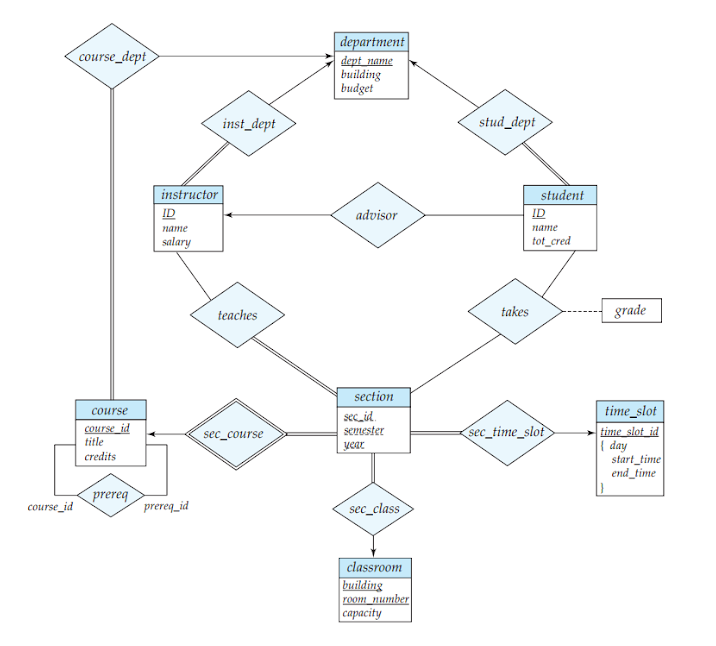Please submit this phase using Blackboard.
Please refresh your mind regarding project policies by reading the syllabus.
Phase 2 consists of an Entity-Relationship model.
Recall in the book, "Database System Concepts" the following describes the components of the ER model, page 275.

Using the ER modeling approach, you will model the Book Fetch project fully. In this model you will identify the entities and relationships using the rectangle/diamond shapes. You will then identify 0-3 attributes for each entity (you may not know the attributes for a given entity yet). If there is an obvious attribute, for instance the primary key, add it to the model for that entity. You may also identify 0-1 attributes for a relationship. DO NOT use this model to define all of the attributes for the entities. This is not the stage where you identify all of the attributes. In this stage, we model abstractly, the concepts involved. You will identify primary keys by using an underline. Identify the cardinality of the relationships.
Recall in the book, "Database System Concepts", cardinality is represented in ER model as shown in the below figure, from page 276. In this figure, (a) represents a one-to-one relationship, (b) represents a one-to-many relationship, and (c) represents a many-to-many relationship.

There are additional advanced modeling concepts you may apply to your model. However, you are not required to use them. You are only required to include what is described above.
This is an example of an ER model for the university schema we use in class. This image is from the "Database System Concepts" book, page 282.

In addition to the ER model, you will write a report which explains the reasons for the design approach you have chosen with a minimum length of 1 page and a maximum length of 10 pages.
[1] Abraham Silberschatz, Henry H. Korth, and S. Sudarashan, Database System Concepts, Sixth Edition, McGraw-Hill. ISBN-13: 978-0073523323 ISBN-10: 0073523321, website: http://www.db-book.com
